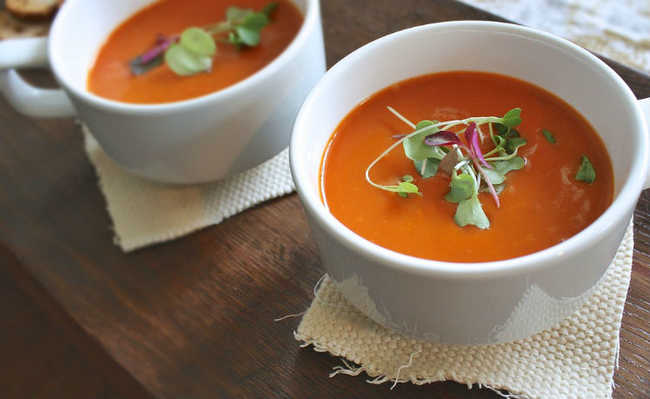Olive leaves help fight diabetes, high blood pressure and more
Olive leaf also has antioxidant, anti-inflammatory and cholesterol-lowering effects.

Edited and resized image by James Lee is available on Unsplash
The olive tree, whose scientific name is Olea europaea L., is a tree of the oil family. Native to the Mediterranean Sea region and northern Iran, the olive tree is very present in Israel, where it is estimated that there are olive trees over 2,500 years old!
In Brazil, the oldest record of olive planting dates back to 1800, when the plant was brought by European immigrants to Rio Grande do Sul. Among the first cultivations, the plant also developed in Minas Gerais and Campos do Jordão, in São Paulo, as the species adapts well to high regions.
In addition to the delicious olives, which are the fruit of the olive tree and from which oil is also extracted, this tree contributes with the benefits of the tea from its leaves.
Benefits
Olive leaf extract, tea and powder are used in several countries due to the potential of their bioactive compounds, which can have antioxidant, anti-hypertensive, anti-inflammatory, hypoglycemic and hypocholesterolemic properties.
Diabetes
The consumption of olive powder, extract or tea provides benefits for people with diabetes, as the hypoglycemic effects of the olive leaf help to regulate glucose levels, reducing the negative effects of blood sugar.
Cancer
According to a study, the anti-inflammatory properties of olive tea prevent inflammation and reduce the risk of developing cancer cells.
Premature aging
The antioxidant effect of olive leaves prevents oxidative stress on cells, which prevents premature aging.
Infections
A study showed that the phenolic compounds present in olive leaf extract have effects against infectious agents causing vaginal, intestinal and respiratory infections.
High pressure
The consumption of olive leaf extract also helps those who have high blood pressure. One study showed that consuming 50 mg of olive leaves as an extract twice a day reduced the pressure of patients with stage 1 hypertension.
All these benefits are due to the presence of oleuropein. And to enjoy the benefits of this substance, the ideal is to include tea in the diet not only to fight diseases, but to prevent them. In addition to tea, another way to include olive leaves in the diet is to add them to hot dishes, especially soups, taking care not to cook them, just add them as an infusion, just like in tea.
To enjoy the benefits of olive tea, check out the recipe below. And, to learn how to include olive leaves in everyday life, check out the recipe for tomato soup with powdered olive leaves.
Cholesterol
Consumption of olive leaf extract helps in reducing bad cholesterol.- Does altered cholesterol have symptoms? Know what it is and how to prevent it
Olive tea recipe

Image of Nazar Hrabovyi in Unsplash
Ingredients
- 1/2 liter of water;
- 10 tablespoons of olive leaves.
Method of preparation
Boil the water. Turn off the heat, add the leaves, cover and let it cool a little. Drink throughout the day without reheating. Learn more about olive tea.
Portuguese tomato soup recipe with olive leaves

Edited and resized image, available at Pxhere
Ingredients
- 1 kilo of very ripe and very red tomatoes, skinless and chopped;
- 1 tablespoon of flaxseed;
- 1 liter of water;
- 1 large chopped onion;
- 4 chopped garlic cloves;
- 4 tablespoons of unsalted tomato pulp;
- 1 sprig of chopped parsley;
- 1 sprig of chopped coriander (optional);
- 1 sprig of mint (optional);
- 2 tablespoons of dehydrated oregano;
- 2 tablespoons of olive leaf powder;
- Olive oil to taste;
- White pepper to taste;
- Salt to taste (1 level tablespoon suggestion);
- Brown sugar (if acidity needs to be corrected).
Method of preparation
Saute the onion in oil for a minute or two. Add garlic and saute. When they start to brown, add the tomatoes and saute them until they start to give off water. Then add the herb sprigs (except oregano and olive) and cook for five minutes.
After this step, add water, salt and pepper. Bring to a boil and taste to see if it lacks salt or other seasoning. Then add the tomato pulp. Let it cook for another 30 minutes, then beat the soup with a mixer. After beating, add the dehydrated oregano and olive powder.
Let it cook for another two minutes and it's ready. Taste and, if you feel too acidic, add a tablespoon of brown sugar (or as much as you think necessary).
Remember if:
- To effectively treat illnesses, optimal doses of drugs or herbs are needed;
- The extract is always stronger than tea or boiled herbs;
- Include olive leaves in your diet preventively;
- To treat illnesses in a homeopathic way, consult a specialist physician;
- The composition of plants varies according to the time of year and growing region;
- And know that olive leaves can be contaminated by copper, so give preference to organic ones.
Heads up
The aforementioned studies analyzed the benefits of extracting olive leaves in specific amounts. This does not mean that olive tea and olive leaf soup will necessarily give the same results.










